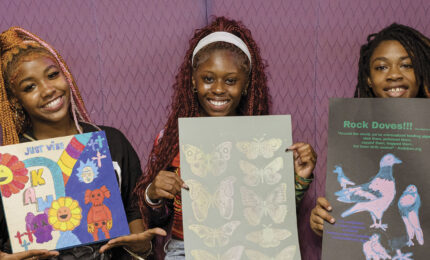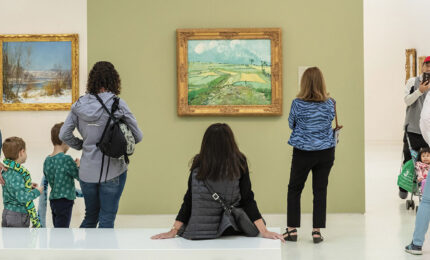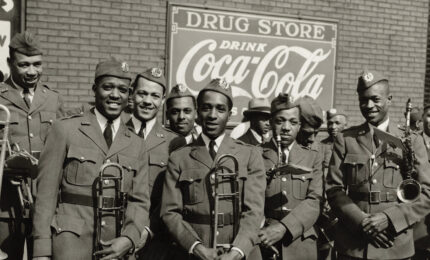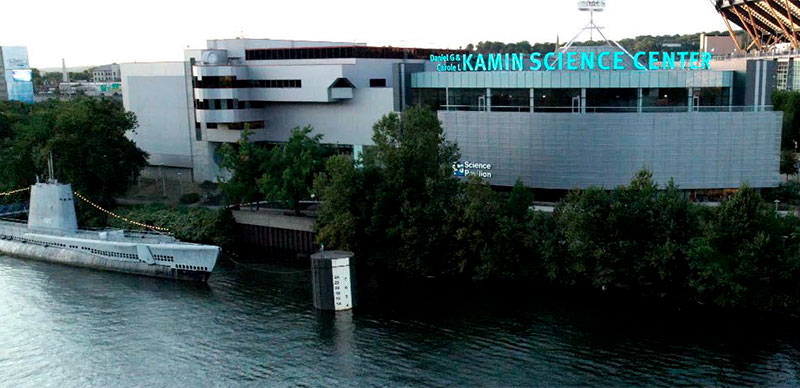It’s an issue students and educators have been grappling with since the return to on-site learning.
Fidgets in the classroom.
In theory, these gadgets that come in a variety of shapes and sizes are designed to help kids stay focused and calm. But as two sixth graders from Pittsburgh’s Provident Charter School have observed, they can also prompt the unwelcome attention of exasperated teachers.
So, Payton and her classmate, Sam, took matters into their own hands. “We wanted to know what type of fidget was the best option for students to use in
the classroom,” says Sam, who has his sights set on becoming an engineer or archeologist.
So began a scientific journey that took the duo to the 2022 Pittsburgh Regional Science & Engineering Fair (PRSEF) held this past March. An annual Carnegie Science Center rite of passage for hundreds of science-minded students, the fair was held at the Science Center for the first time in its 83-year history. And for the first time since the start of the COVID-19 pandemic it was held in person.
Over two days, more than 400 middle and high school students from Western Pennsylvania and Maryland, as well as some 200 judges, gathered to talk about all things science.
At the start of day one, the junior division contestants—including Payton and Sam—quickly took over the center’s PointView Hall, setting up their three-panel presentation boards. Topics ranged from “Differentiating Orca and Bottlenose Dolphin Vocalizations using Artificial Intelligence” to “The Effect of Glucocorticoids on Inflammation in a Lung Cell Line“ to “A Better Blend of Biofuels.” Each entry adhered to the same method of scientific inquiry: problem identified, hypothesis formed and tested, data analyzed, and the results interpreted, presented, and debated.
“I truly love when students take something they see or experience in their own lives and then articulate it in a project.”
-Nikole Sheaffer, senior director of STEM education for Carnegie Science Center
Not every project on display seemed to fit the classic science-fair model. But that’s exactly the point, says Nikole Sheaffer, Carnegie Science Center’s senior director of STEM education.
“Part of the beauty of the Science Fair is how kids approach a range of different problems,” she says. “You have students who already have experience working with chemicals or variables taking a more traditional academic approach, and then you have kids who are just trying science for the first time and exploring topics that are important to them.”
Connecting local and global issues, problem-solving, and linking people to science is more important than ever, Sheaffer adds. “We want to build scientific literacy. We want to build students’ ability to communicate ideas in a way that allows an audience to understand and question the results.
“We are here, pardon the metaphor, to be the vaccine for the disease of anti-facts and anti-critical thinking,” she continues. “It’s our job to combat what is happening around us.”
The Science Fair students seemed up to the challenge.
Leon, a sixth grader from Queen of Angels Catholic School in Westmoreland County, was thinking about how global warming adversely affects the ocean waters. His project, “Acidity vs. Seashells,” started with the premise that higher levels of carbon dioxide contribute to increased acidity in the world’s oceans.
In an effort to prove or disprove that theory, he collected shells of the same tint, mass, and size, placed them in solutions of varying amounts of distilled water and vinegar or baking soda, and noted the changes.
“I found out that as more time passed and as the solutions were more acidic, the more withered and soggy the seashells became,” Leon explains. “By doing this project I saw how unhealthy the oceans are and how that affects the seashells. I hope to learn how we can stop these bad effects from happening.”
This may have been Leon’s first “serious” science fair, but there were no signs of rookie jitters. The aspiring marine biologist even took home first place in the junior biology category.
By the end of the two-day event, select winners from the junior and senior divisions were chosen to represent PRSEF in the upcoming Regeneron International Science & Engineering Fair in Atlanta.
Although Payton’s and Sam’s “Fidgets in the Classroom” didn’t land at the top of the leader board, it did catch Sheaffer’s attention. “I truly love when students take something they see or experience in their own lives and then articulate it in a project,” she says. “To me, that’s the sweet spot. Those kids are going to remember that project forever because it was meaningful to them.”
“We wanted to find a way to keep students out of trouble with their teachers,” says Payton, who hopes to work in special education. To that end, she and Sam set into motion a process that involved narrowing the field of fidgets to just three noiseless varieties (marble mesh, stress ball, and furry string ball), providing each grade level with just one of the three variables, and then conducting a survey of the teachers to determine which option was the least disruptive.
In the end, their hypothesis was affirmed: Due to its relatively small size and simple design, the marble mesh was the fidget of choice.
Problem solved. Mission accomplished.







